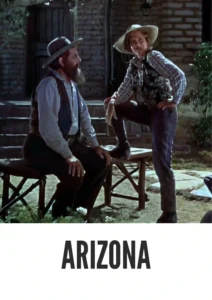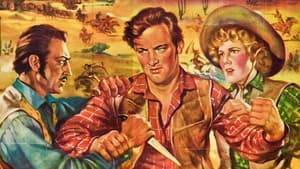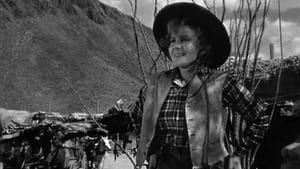Video Sources 0 Views

Download Arizona (1940) Colorized HD | William Holden | Western Drama Classic
Synopsis
From Dusty Territory to Vibrant Color: Arizona (1940) – A Western Epic

Saddle up for Arizona, a sweeping Western drama from 1940, now stunningly colorized to bring the Old West to life. Starring William Holden and Jean Arthur, this film, sometimes known as The Arizonian, tells a tale of ambition, survival, and romance amidst the untamed landscapes of the Arizona Territory. Perfect for fans of classic Westerns and historical dramas, this HD download offers a captivating journey back in time.
Arizona Storyline: Building an Empire in the Wild West
Arizona chronicles the endeavors of Phoebe Titus (Jean Arthur), a resolute woman with an entrepreneurial spirit, as she strives to establish a freight business in the burgeoning town of Tucson. Set against the backdrop of the 1860s Arizona Territory, Phoebe faces numerous obstacles, including ruthless competitors, bandits, and the challenges of frontier life.Amidst the turmoil, she encounters Peter Muncie (William Holden), a charming cowboy who becomes both her ally and romantic interest. Together, they navigate the dangers and opportunities of the Wild West, battling adversity and building a future in a land ripe with promise. Arizona is a grand, action-packed saga that celebrates the courage and determination of those who shaped the American West.
Movie Cast
The film boasts a stellar cast of actors who authentically portray the characters of this Western epic:
- Jean Arthur as Phoebe Titus
- William Holden as Peter Muncie
- Porter Hall as Lazarus Ward
- Paul Harvey as Henry Hooker
- Edgar Buchanan as Judge Bogardus
Movie Genre
Arizona is a Western drama that encompasses elements of romance, action, and historical narrative. Its sweeping scope and compelling characters make it a standout in the genre.
Historical Context: The Golden Age of Westerns
Released in 1940, Arizona hails from the golden age of Western cinema, a period marked by grand productions, heroic characters, and sweeping landscapes. The film reflects the nation’s fascination with its own frontier history and the values of self-reliance and perseverance. Arizona captures the spirit of westward expansion and the challenges faced by those who sought to build a life in the untamed territories.
Colorization Details
This colorized version of Arizona has been meticulously restored using modern digital techniques, enhancing the visual appeal while preserving the film’s original grandeur. The colorization process involved careful analysis of the grayscale tones of the original black and white footage and assigning appropriate colors to each scene. While the specific software used remains proprietary, the techniques employed included advanced algorithms for color palette selection and image enhancement. This painstaking process brings new life to the characters and settings, making the story even more engaging for modern audiences.
Technical Details
- Director: Wesley Ruggles
- Screenplay: Clarence Budington Kelland
- Cinematography: Joseph Walker
- Edited by: Otto Meyer
- Production Company: Columbia Pictures
- Distributed by: Columbia Pictures
- Runtime: 128 minutes
Technical Specifications
- Download Format: MP4
- Resolution: HD (1080p)
- Compatibility: Compatible with most devices, including smartphones, tablets, computers, and smart TVs.
Reviews and Critical Reception
Arizona (1940) is celebrated for its epic scope, strong performances, and vibrant portrayal of the Old West. The film captures the pioneering spirit and the challenges of frontier life, making it a beloved classic among Western enthusiasts. With its sweeping landscapes and compelling characters, Arizona remains a testament to the enduring appeal of the Western genre.
FAQs
- Q: What is Arizona about?
- A: Arizona tells the story of a determined woman who establishes a freight business in the Arizona Territory and finds love amidst the challenges of frontier life.
- Q: Who are the main actors in Arizona (1940)?
- A: The film stars Jean Arthur and William Holden in the lead roles.
- Q: Is this version of Arizona colorized?
- A: Yes, this version has been professionally colorized to enhance the viewing experience.
- Q: What makes Arizona a classic Western?
- A: Arizona captures the spirit of westward expansion and the challenges faced by those who sought to build a life in the untamed territories.
- Q: What is the download format?
- A: The download format is MP4, which is compatible with most devices.
- Q: What resolution is the download?
- A: The resolution is HD (1080p), providing a high-quality viewing experience.
Download Now in HD!
Watch Arizona Today!













